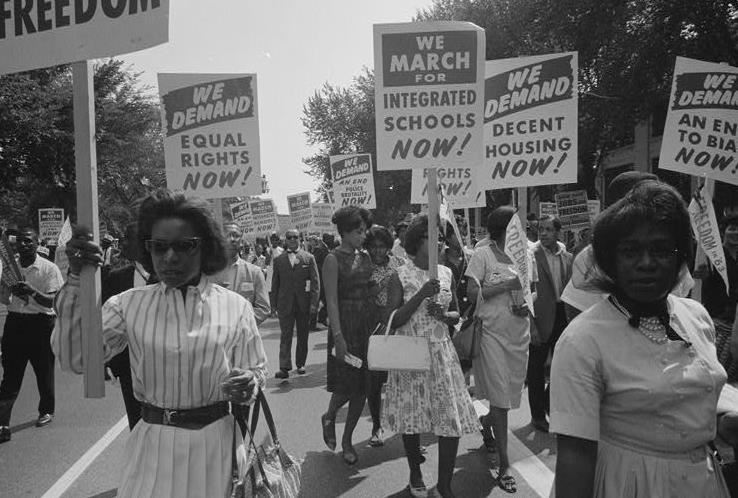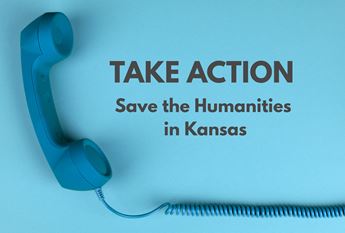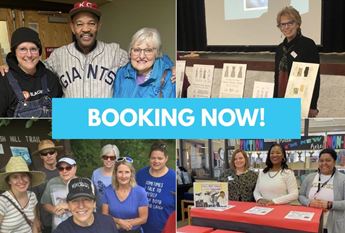

Big Idea Q&A with Clarence Lang
June 1, 2018
Clarence Lang, Interim Dean of the College of Letters and Sciences at the University of Kansas, answered questions submitted by Kansans about his Big Idea: "It's time to change how we talk about the Civil Rights Movement."
Q: In redefining the Civil Rights Movement as the Black Freedom Movement, are there concerns with the FBI’s initiative to label and prosecute so-called “black identity extremists”?
Dr. Lang: The use of the term “Black Freedom Movement” reflects an effort to expand public understanding about African American activism beyond a focus on a particular period (e.g., the 1960s), region (e.g., the U.S. South), leader (e.g., Martin Luther King, Jr.), or set of activities (e.g., nonviolent direct-action protest). It is an all-encompassing term that seeks to capture the breadth and width of all the activities black people have used to improve their social, economic, and political conditions in this society. The fact that the FBI used the term “black extremist” to denigrate, vilify, and repress black protest against U.S. racial apartheid was a revealing commentary on the agency’s problematic approach to legitimate African American dissent, and not a reflection on the legitimacy of black social movements themselves.
Q: Considering the need of black joy/excellence, the struggle to openly partake in the black identity (example: code-switching), and the negative view of black culture, policy aside, how does the Civil Rights Movement relate to the black experience in terms of identity.
Dr. Lang: One of the undervalued aspects of black social movements have been their role in transforming African Americans’ views of themselves. As a result of their activism, black activists discovered powerful, liberating new identities. For instance, these activists were at the forefront of cultural changes that led an entire population to get rid of descriptions like “negro” and “colored,” which had been imposed on them, in favor of new identities like “black” and “Afro-American.” Black activists similarly discovered new, African-centered identities that changed – in very positive ways – their view of themselves in relation to the continent and led them to celebrate their heritages as African-descended people in America.
Q: For younger generations who feel detached from the Civil Rights Movement, but connected to the modern day black struggle/movement, how are the two similar? Are they the same?
Dr. Lang: Modern protest movements like Black Lives Matter certainly follow in the footsteps of earlier black freedom struggles, build on their legacies, and grapple with the issues their predecessors were not able to resolve. So, in this sense, black protest has had continuity across time. However, it has also been the case that contemporary struggles must confront the particular forms of inequality that characterize the particular historical moment that differing generations of black people happens to occupy. In this sense, movements are specific to their specific era – which means that their targets, goals, priorities, and points of focus are changeable from one period to the next.
Q: I like your idea of extending the conversation of the Civil Rights Movement beyond the “classical” time frame of 1954-1964, what are some examples from the pre-1954 period?
Dr. Lang: In my first book, Grassroots at the Gateway, which focused on black freedom movements in St. Louis, Missouri, I devoted chapters on the 1930s and 1940s. This was a period defined by African Americans’ involvement in the unemployed movement and industrial unionism during the Great Depression, as well as militant “Don’t Buy Where You Can’t Work Campaigns.” Similarly, the World War II period of the 1940s was an important moment in which black communities waged a “Double Victory” campaign against Nazism in Europe and Jim Crow in the United States. There would have been no 1955 Montgomery Bus Boycott or 1960 student sit-in movement without these earlier, often forgotten periods of black activism earlier in the twentieth century.
Q: How can we engage those with the “one person cannot make a difference” mindset?
Dr. Lang: I tend to think that while individuals do make a difference, inequalities exist beyond the individual. The reality is that poverty, racism, sexism, and so forth are experienced collectively – they are social, not private. As a result, resolving collective problems warrant collective action, solutions, and conditions. Transformative social change occurs only when individuals join together around shared concerns, and when they are able to mobilize to attack social problems through organizational means like civic or religious groups, cultural institutions, or other networks and means most familiar to them.



